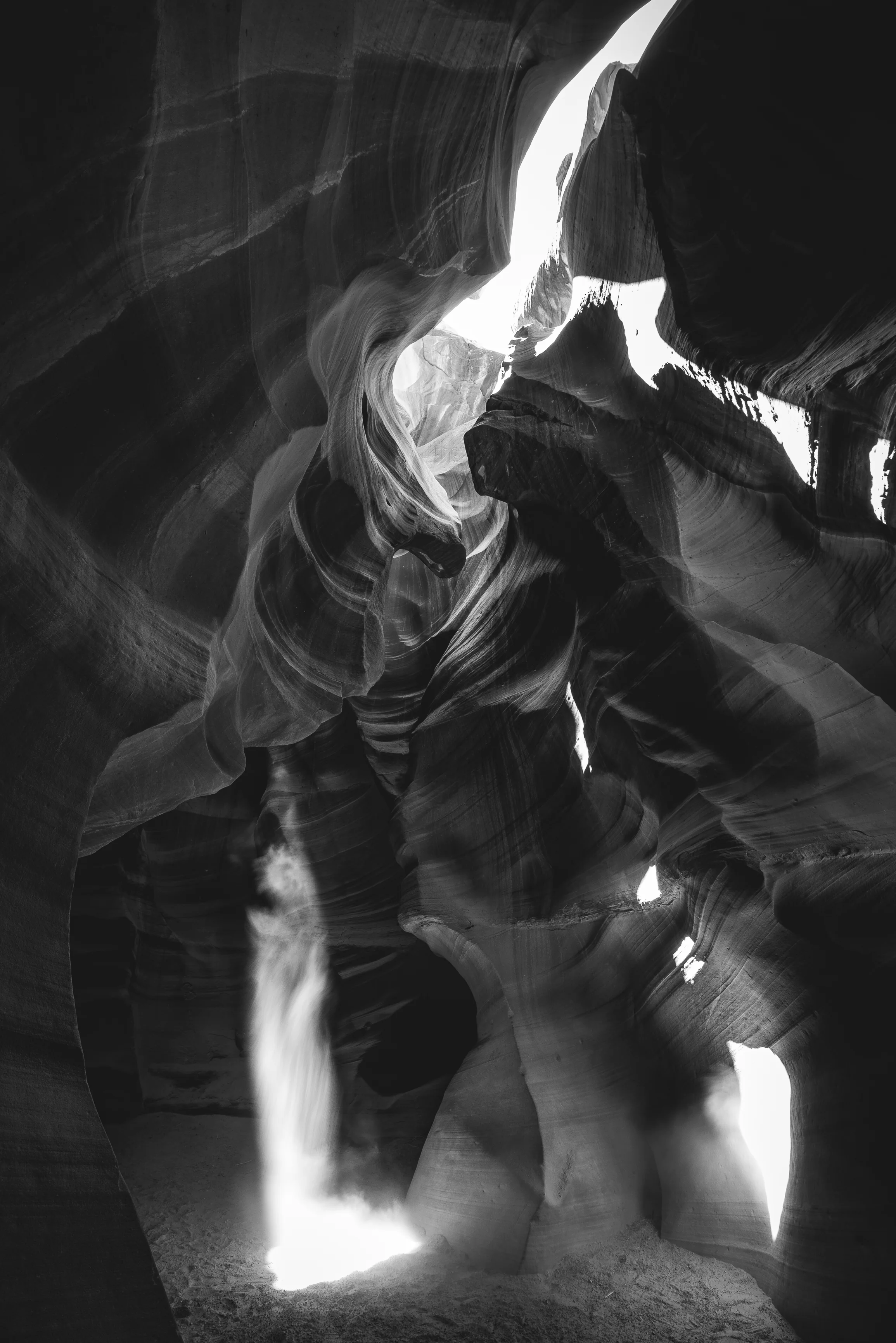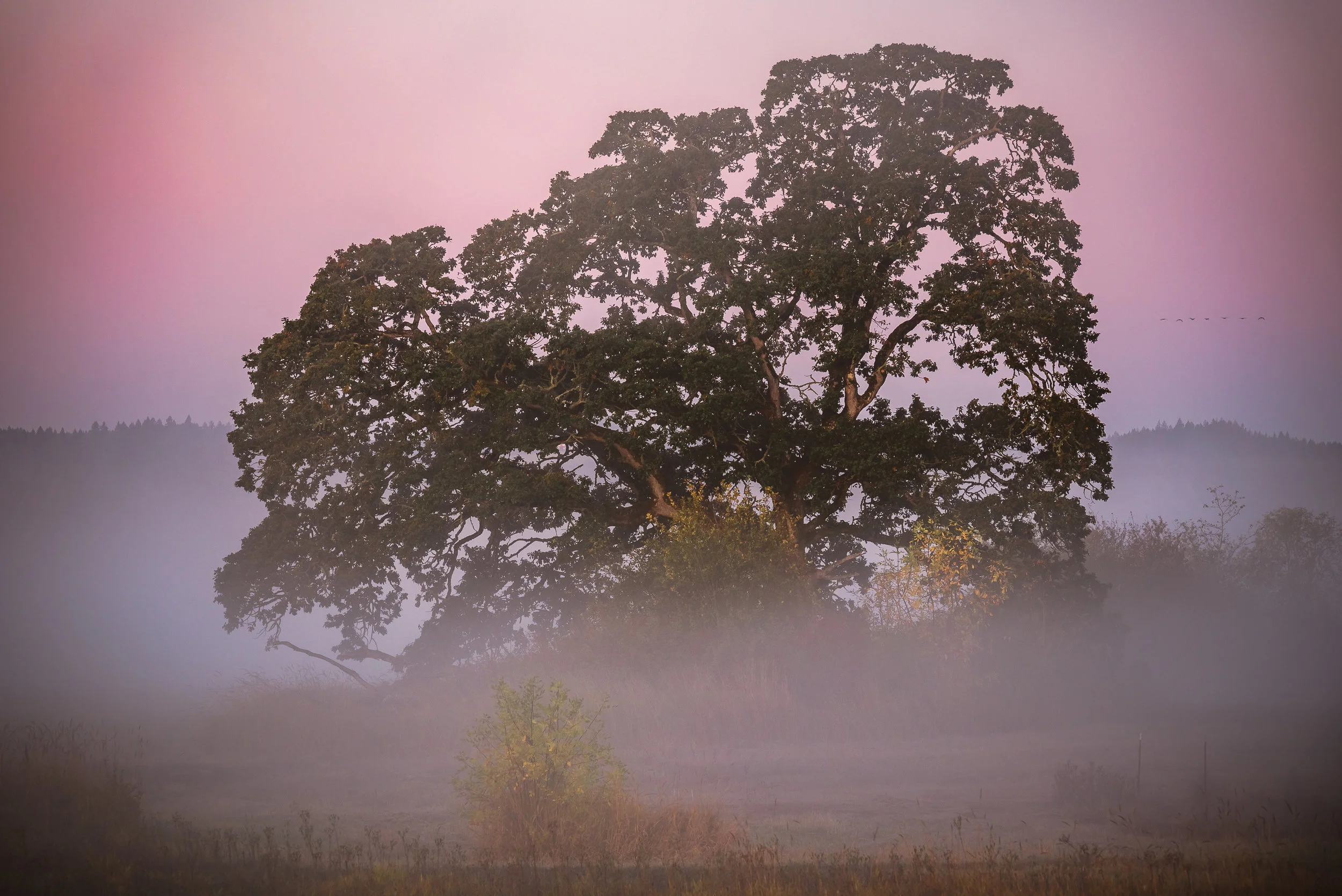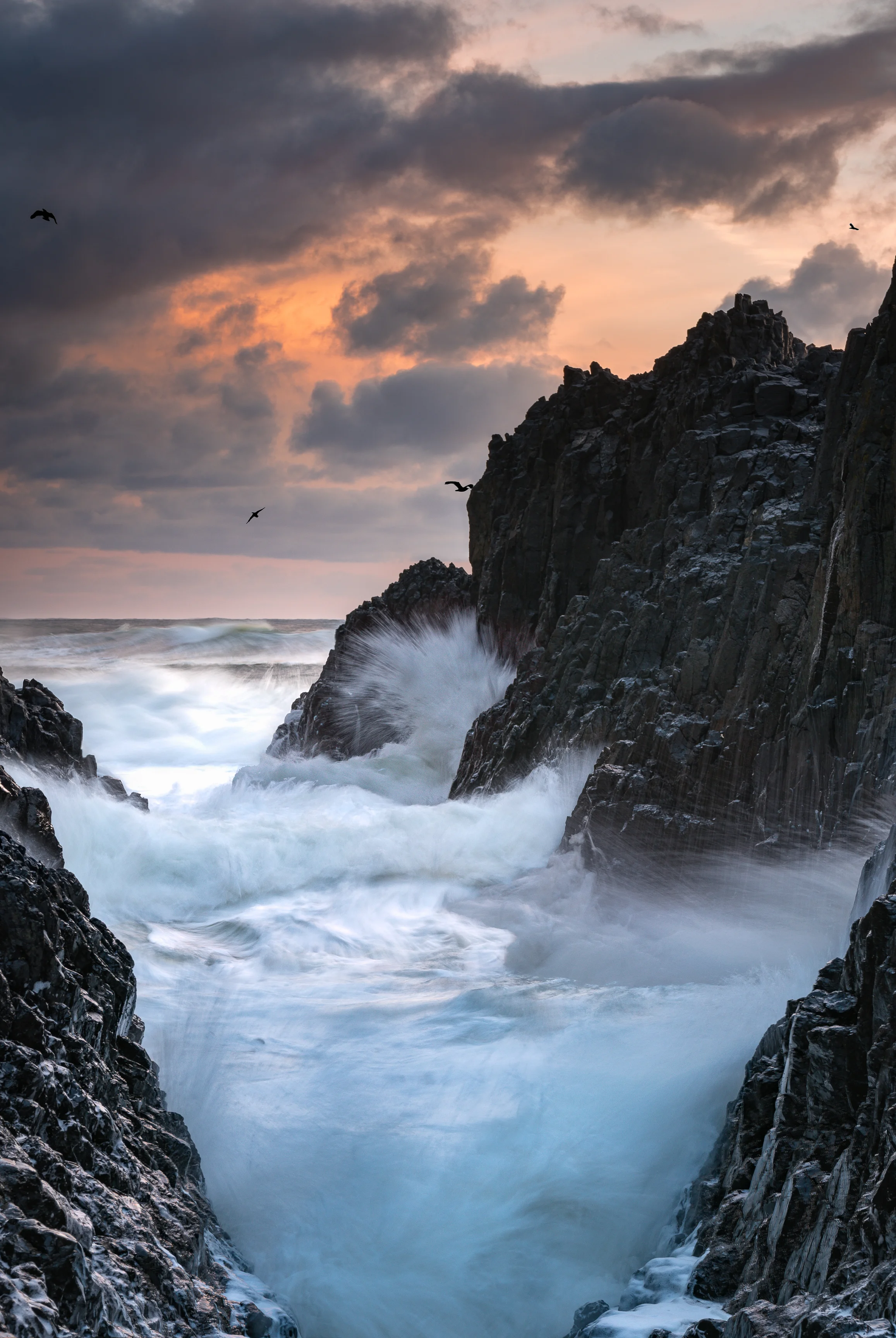'Spectre' is an image of a ghost-like figure in a slot canyon created from moving backlit sand.
Photography has been around for well over 150 years now. It has been through a lot of different phases being utilized for mainly documenting purposes, a way of generating images of people quicker than a portrait painter, and for catching your favorite celebrities on the streets. It is fairly easy to say landscape photography is a form of art, but a deeper questioning into its value is to wonder if it holds up as fine art.
What is fine art? If we just go for the definition of “creative art, especially visual art, whose products are to be appreciated primarily or solely for their imaginative, aesthetic, or intellectual content.” that might work. I would like to go a step further and question what that means. Lets break that definition down into its three main criteria for defining what a piece of fine art is and see if landscape photography can fit this definitive standard.
Creative Art
In order to be considered fine art it has to be creative at some level. Ok, so I guess we can’t all go to the same place and shoot the same spot, composition, and edit it the same way others have. There has to be something transformative or creative done at the iconic and well-documented locations otherwise it is just that, documenting. It could be using technology to create something new at a popular location, showing a place from an angle unseen before, or maybe going to somewhere nobody has seen before and capturing its beauty in an attractive way. It means going the extra mile to create rather than regurgitate what has been already done over and over.
Product
A local tree captured in unique conditions after repeated visits.
There must be some type of product. This might not be a physical print being sold but it could be! The product just has to be appreciated for something outside of just the physical material used. A metal print is not valuable because it is on metal or has ink infused into it (as ridiculous as that is for me to say). Obviously! Less obvious is how we make sure the materials and medium of delivering the product doesn’t detract or distract from the art itself as this an important distinction in fine art. The art should transcend how it is presented.
Imaginative, Aesthetic, or Intellectual Values
My own interpretation of the Oregon Coast.
I saved the most difficult and abstract concept for last. The art must meet all three components to qualify by definition as ‘fine art’ including this final one. Being imaginative in landscape photography may be difficult, but can be possible through more abstract interpretations of nature and creative applications of camera techniques. Making sure the composition, color, and editing is done to taste creating a pleasing aesthetic can also be a valid approach in fine art landscape photography. Lastly, you can create imagery that captures a scene in a way that allows a viewer to learn and experience nature in a new way. I think the best example of creating intellectual value in landscape photography has to be that of glacier photography done with a split view of the part above the water along with the submerged ice you don’t normally see.
Conclusion
Not all landscape photography is going to qualify as fine art by definition. You also don’t have to follow this guide in determining what photography is and is not fine art. Art has always been subjective and putting objectivity to any degree won’t work for everybody. That being said, I think I can objectively say that by definition landscape photography can be fine art.



